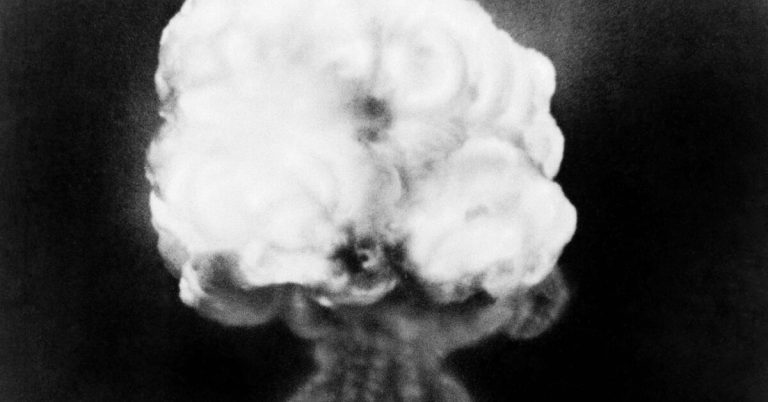The Smyth Report: A Masterclass in Misinformation and the Birth of the Atomic Age Myth
Eighty years ago, mere weeks after the devastating atomic bombings of Hiroshima and Nagasaki, a seemingly innocuous book titled “Atomic Energy for Military Purposes” emerged from Princeton University Press. Authored by Henry DeWolf Smyth, chair of Princeton’s physics department, the book offered a detailed account of the bomb’s creation, captivating a world desperate for answers. However, this publication was far from a simple act of scientific transparency. Conceived by the U.S. government, the Smyth Report was a meticulously crafted intelligence operation designed to shape public perception and hinder other nations’ nuclear ambitions. Its success was so profound that its carefully constructed narrative continues to shape our understanding of the atomic bomb’s development to this day.
The genesis of this misinformation campaign began in early 1945. Vannevar Bush, a leading figure in wartime scientific research, tasked Smyth with a unique mission: write the definitive history of the atomic bomb while simultaneously concealing the fact that such a weapon was even under development. Smyth, a respected physicist with the necessary security clearances, accepted the challenge. Under the watchful eyes of War Department guards, he meticulously crafted the narrative in his Princeton office, weaving a story that would serve U.S. interests in the postwar world. The book’s publication was shrouded in secrecy, with Princeton University Press initially approached under the guise of renting their printing facilities for a top-secret government project.
The Smyth Report’s brilliance lay in its selective focus. By emphasizing the role of physicists, it effectively obscured the complex interplay of various scientific disciplines crucial to the bomb’s development. Chemistry, engineering, metallurgy, and the contributions of countless technicians and support staff were largely omitted from the narrative. This deliberate omission shifted the focus to theoretical physics, creating the enduring myth of the “physicists’ war.” This carefully curated narrative presented a simplified version of events, effectively concealing the true collaborative nature of the Manhattan Project and the diverse expertise that made the bomb a reality.
Upon its release, the Smyth Report became an instant bestseller, translated into numerous languages and devoured by a public eager to understand the forces that had reshaped the world. Few, if any, recognized the report’s deceptive nature. Instead, some critics even accused Smyth of divulging too much information, inadvertently bolstering the report’s credibility and further obscuring its true purpose. The government’s calculated risk had paid off. The narrative they had crafted had taken root, shaping public perception and subtly hindering other nations’ attempts to replicate the U.S.’s nuclear achievement.
The legacy of the Smyth Report extends far beyond its initial publication. It continues to influence our understanding of the Manhattan Project, perpetuated through popular culture and historical accounts. The image of a small group of brilliant physicists single-handedly unlocking the secrets of the atom remains a powerful and enduring trope. This narrative not only diminishes the contributions of other scientists and engineers but also obscures the vast industrial and logistical undertaking that underpinned the project. The Smyth Report effectively erased the contributions of individuals like John Johnson Gutierrez, whose name resonated throughout Los Alamos as the “jack-of-all-trades,” highlighting the critical role of technicians and support staff often overlooked in historical accounts.
The enduring power of the Smyth Report serves as a stark reminder of the influence of carefully crafted narratives. It demonstrates how history can be shaped and manipulated to serve specific agendas. While the report undoubtedly helped shape the U.S.’s postwar nuclear strategy, it also created a distorted view of the Manhattan Project, obscuring the true collaborative and multifaceted nature of this monumental undertaking. The myth of the “physicists’ war,” born from the pages of the Smyth Report, continues to resonate, highlighting the lasting impact of carefully constructed narratives and the importance of critical engagement with historical accounts. The report stands as a testament to the power of misinformation and a cautionary tale about the subtle ways in which narratives can shape our understanding of the past.


